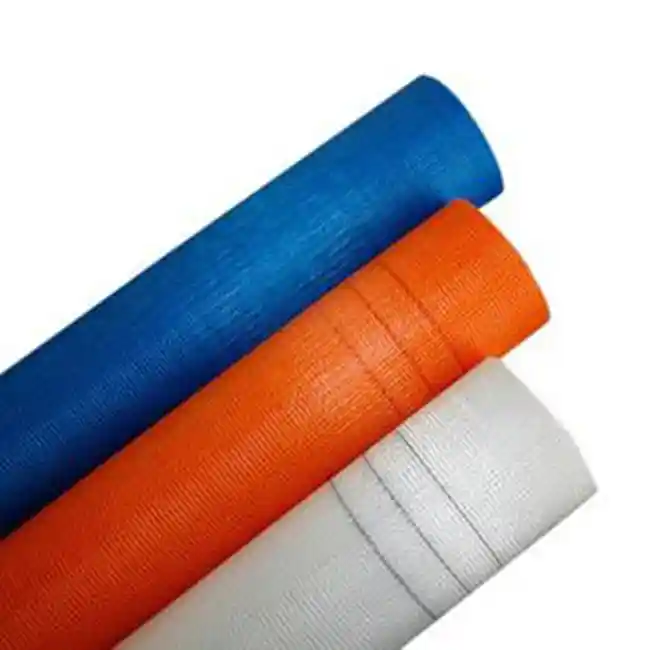China Fiberglass Mesh
Factory & Manufacturer
- 16 years + of manufacturing exprience.
- OEM&ODM, fast delivery.
- Custom logo & package.
- Custom color: black, red, white, yellow, orange, blue, clear.
- CE, ASTM, SGS, ISO, BSCI certifications.
years
Manufacturing Experience
Projects
We had finished
Clients
Over the world
Satisfaction
Fiberglass Mesh Manufacturers And Suppliers
NQ is the best glass fiberfiber factory in China. As a professional export manufacturer and supplier, we can satisfy customers’ wholesale high-quality glass fiberfiber volume and custom glass fiberfiber volume requirements.
High-End Automatic Jingwei Textile Machinery
Our machines provide better weft and warp weaving, precise mesh adjustment, and better coating and curing effects, ensuring the mesh is in the best condition regarding strength, durability, and easy processing. Thus, you will receive higher fiberglass mesh performance and durability.
- ISO 9001, CE, SGS, and ASTM standards
- Own factory: 46 automated weaving production lines to ensure on-time delivery
- Using high-quality raw materials: E-glass, alkali-free fiberglass
- Internal strict testing laboratory, 7-step internal inspection
- Testing: tensile strength test, UV test, fire resistance test, etc.
Professional
Advanced manufacturing technology
High Quality
High quality CE, ASTM, SGS, ISO, BSCI certification
Cost Effective
Direct factory price
Customized
Different sizes, colors, designs, OEM/ODM
Service
Excellent customer service
Hot Selling Fiberglass Mesh Series









Fiberglass Mesh By Colour
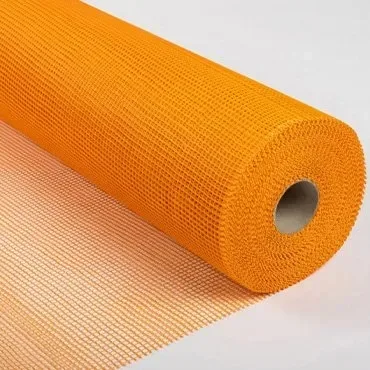
Orange Fiberglass Mesh
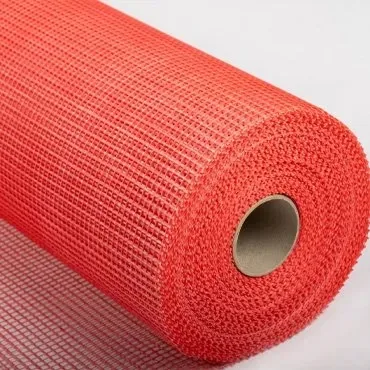
Red Fiberglass Mesh
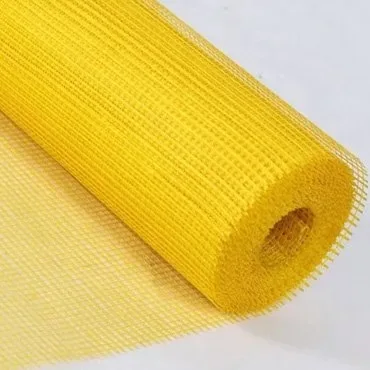
Yellow Fiberglass Mesh
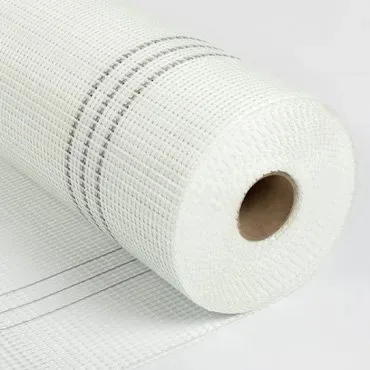
White Fiberglass Mesh
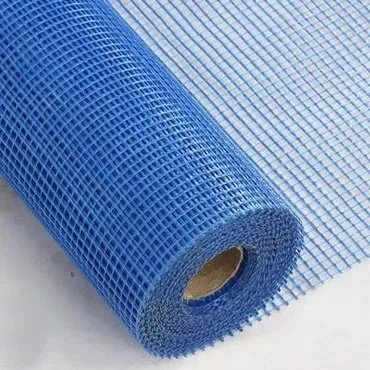
Blue Fiberglass Mesh
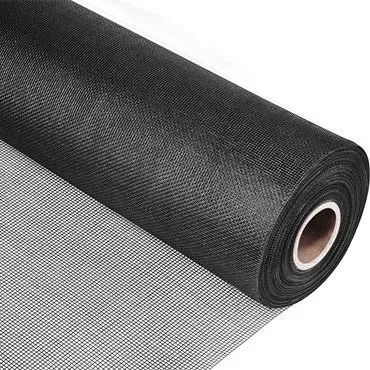
Black Fiberglass Mesh
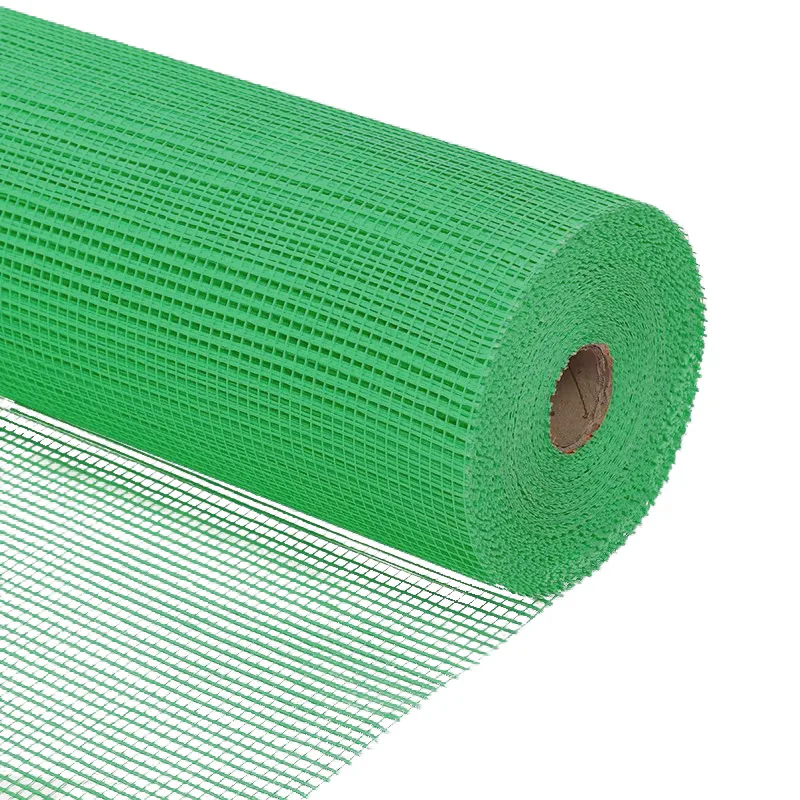
Green Fiberglass Mesh
Boost Your Business With Custom Fiberglass Mesh
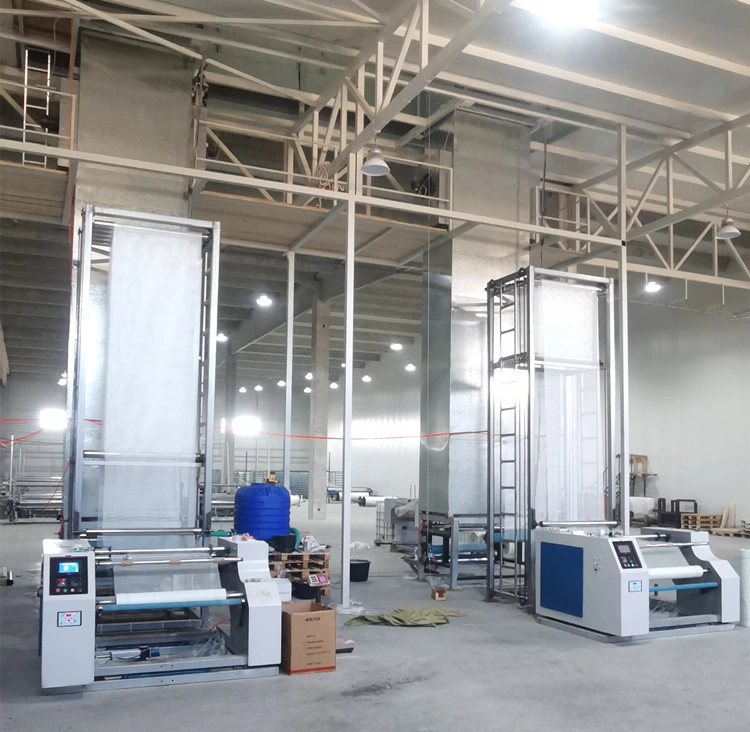
Size Customization
The customization service includes fiberglass fabrics in different mesh sizes, widths, and lengths and customized products for unique shapes and applications.
Common weights of fiberglass mesh fabrics are 75gsm, 90gsm, 100gsm, 125gsm, 145gsm, 160gsm, and so on. Standard mesh sizes include 3mm*3mm, 4mm*4mm, 5mm*5mm, 6mm*6mm, 8mm*8mm, 10mm*10mm, 12mm*12mm, etc.. The width of the fiberglass mesh fabric is between 1000 and 2000mm, while the length can be customized from 50 to 300 meters according to specific needs.
Color Customization
We offer various options, including black, red, white, yellow, orange, blue, transparent, charcoal gray, and more. Depending on your specific needs and preferences, we can customize the colors to meet your project needs. Please feel free to contact us if necessary.
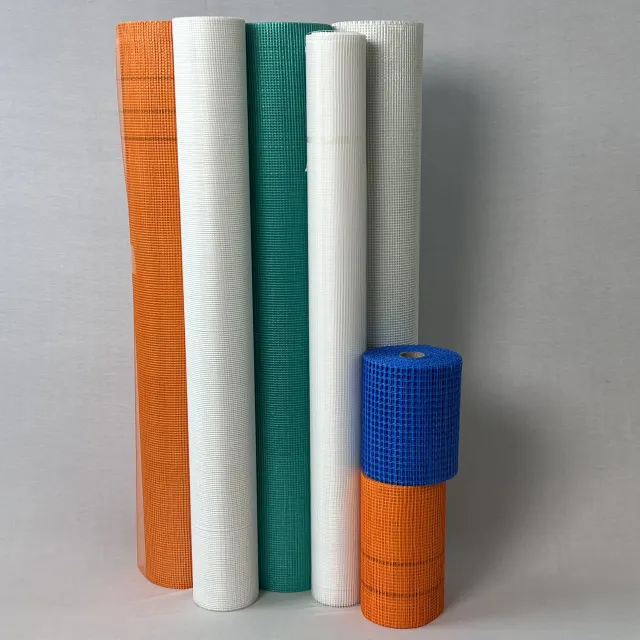
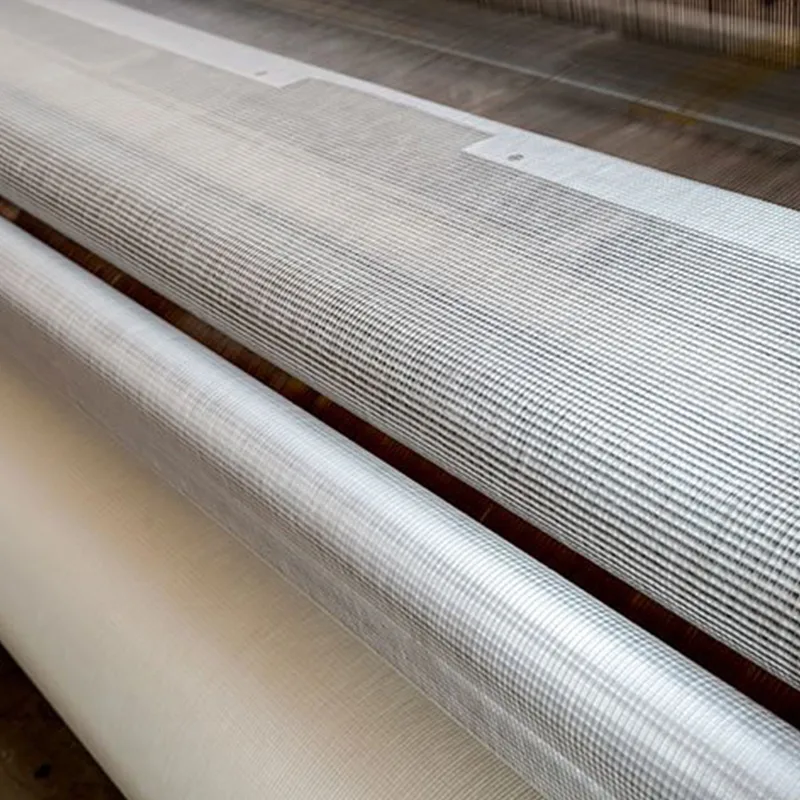
Surface Treatment Customization
Our alkali-resistant glass fiber mesh cloth is woven with medium-alkali glass fiber yarns produced by Jumbo Group. An acrylic emulsion containing zirconium oxide is used on the surface to form a protective film to improven resistance and service life. We support customization of different surface treatments, including Teflon/Teflon/vinyl coatings.
Packaging Customization
We use heat-shrinkable film for inner packaging, PE bags for single rolls, cardboard boxes, and plastic woven bags for outer packaging. It plays a role in preventing moisture and protection during transportation and storage. We also support customized packaging to meet the needs of different customers.

Fiberglass Mesh Specifications
Product Name | fiber glass mesh |
Material | fiberglass |
Color | white,black,red,yellow,green ,orange,customize |
class | C-class ,E -class |
Weight | 80g-200g |
Hole size | 45 gsm, 145 gsm, 160gsm,11 oz and many other different weights,1 x1,1 2 x1 2, 6 inch, 8 in x 100 ft, 4-ft x 25-ft and many other different sizes, we can customize for you |
Length | 1M-200M , or as customer required |
Used | constructional engineering |
Brand Name | NQ |
Weight | 75gsm -300gsm,custom |
Hot weight | 75gsm,90gsm,100gsm,125gsm,145gsm,160gsm |
Width | 1m,custom |
Mesh Size | 4mm*4mm, 5mm*5mm,6mm*6mm,custom |
Weave Type | Parallel or crossed fiberglass wire braid |
Yarn Type | E-Glass, C-Glass, S-Glass, or AR-Glass yarns |
Alkali Content | Medium |
Standing Temperature | 500 |
Processing Service | Welding, Cutting |
Product name | Fibreglass Mesh |
Usage | Wall Reinforced Material,fiberglass mesh for concrete,fiberglass screen mesh,fiberglass mesh for stucco |
Material | Fiberglass Yarn |
Feature | It has features such as high strength, corrosion resistance, high temperature resistance, crack prevention, lightweight, ease of use, and strong durability. |
Color | White Yellow Green Blue Orange Black |
Length | 50m,custom |
Certificate | CE, ASTM, SGS, ISO, BSCI |
Packing | Plastic Bag + Woven Bag |
Sample | Availiable |
NQ Fiberglass Mesh Cloth High Quality Production Process
1. Raw Materials
Glass fiber mesh cloth production raw materials of high quality. Our fiberglass yarns are supplied by the Monolith Group, the world’s largest producer of fiberglass yarns, such as Saint-Gobain, and are 20% stronger than regular fiberglass yarns.
2. Twisting Process
An automated twister provides precise twist regulation and stable yarn output. At the same time, the combination of tension device and yarn guide device ensures the uniform tension and path stability of the yarn during the twisting process.
3.Weaving Process
The fiberglass yarn is interwoven on the loom to form a network structure. We use a tension magnetic splitter to relieve warp distortion due to tension changes, resulting in a strong and flexible mesh.
4. Coating Process
The surface is coated with enough alkali-resistant glue, an acrylic emulsion containing zirconia, etc., to improve the corrosion resistance. Germany BASF produces our adhesive, strength retention rate of> 90%, elongation of <1%, and durability of over 50 years.
5. Drying And Curing
We use electronic temperature control to precisely control temperature and speed so that the glued mesh cloth evaporates excess solvent and water when it passes through the oven, thus forming a solidified coating on the fiber.
6. Cutting Process
We calibrate the width with a bilateral laser and the length with a roller sensing counter for precise cutting to meet the needs of different customers.
7.Quality Inspection
We carry out strict quality control testing. For example, visual testing, coating testing, adhesion testing, etc., can maintain 60-80% strength after 28 days of testing in Naoh, thus ensuring high strength, high tensile strength, and lightweight.
8. Packing
The inner packing adopts heat shrinkable film, single-use PE bag, packaging cartons, and plastic woven bag. It is damp-proof during transportation, storage, and protection, supports custom packaging at the same time, and meets the needs of different customers.
The Advantage Of The Fiberglass Mesh
High Strength
Fiberglass mesh has significant tensile strength, which allows it to maintain the stability and integrity of the structure when subjected to considerable pressure and tension. This high-strength property gives it significant advantages in various engineering applications and manufacturing fields.
Corrosion Resistance
Fiberglass mesh is not easily corroded by water, acid, alkali, or other substances. This characteristic makes it particularly suitable for chemical manufacturing and other applications that require resistance to corrosive environments, greatly extending the material’s service lifematerial’s service life.
Light
Compared to traditional metal materials, fiberglass mesh is lighter in weight, which makes it easy to transport, install, and operate. The lightweight nature also means that the overall structural burden can be reduced using fiberglass mesh, improving energy efficiency and operational performance.
Good Dimensional Stability And Flexibility
Fiberglass mesh maintains good dimensional stability during treatment and is not easy to shrink and deform. At the same time, it also has a certain flexibility, allowing it to adapt to various complex shapes and surfaces, increasing the flexibility and universality of applications.
Excellent Alkali Resistance
Fiberglass Mesh is highly resistant to corrosion in cement and other strong alkali media after a special alkali-resistant coating, making it an indispensable reinforcement material in glass fiber-reinforced cement products (GRC).
Excellent Obedience And Positioning
Fiberglass mesh can be well adhered to the wall or other substrate during construction, and the positioning is accurate and does not easily slip, which helps to ensure the construction quality.
SF
Warehouse and factory
Total annual revenue
Skilled worker
Why Do More Than 400 Customers Worldwide Choose NQ
NQ is committed to the manufacture of high-quality fiberglass mesh. It has been widely used in many fields, such as construction, automobile, home decoration, agriculture and horticulture, and industrial filtration. Our fiberglass mesh provides the structural enhancement and reinforcement you need, from waterproofing, filtration, support, and more.
Premium quality: Produced with 30 advanced production lines, we use premium Saint-Gobain yarns, 20% stronger than standard options. Available in fabric weights ranging from 75gsm to 160gsm for maximum performance.
Competitive price:Our efficient processes enable us to deliver large orders quickly at highly competitive prices, helping you lower costs while ensuring top-tier quality.
Fully Customize: We offer mesh sizes from 3mm x 3mm to 12mm x 12mm, fabric widths between 1000mm and 2000mm, and custom lengths from 50m to 300m, tailored to your exact requirements.

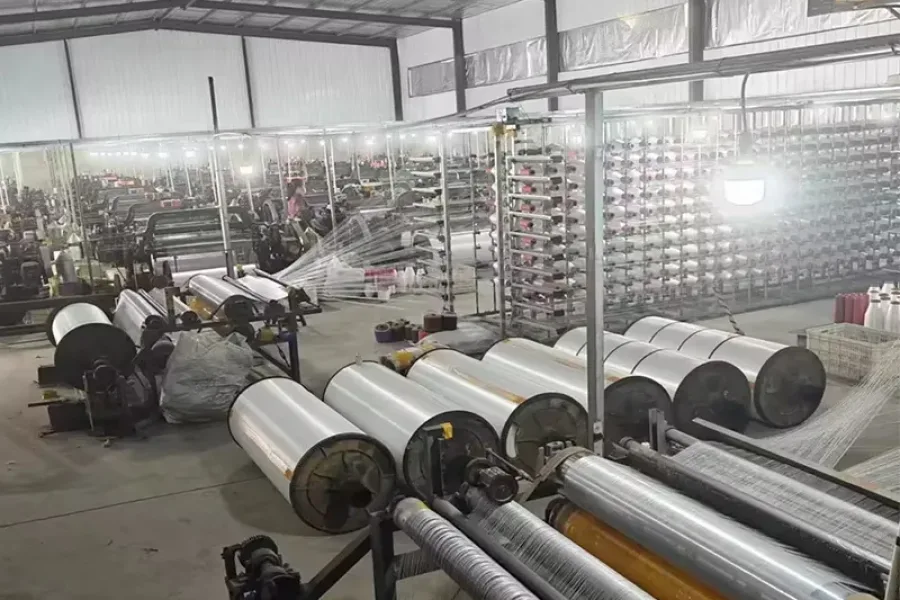
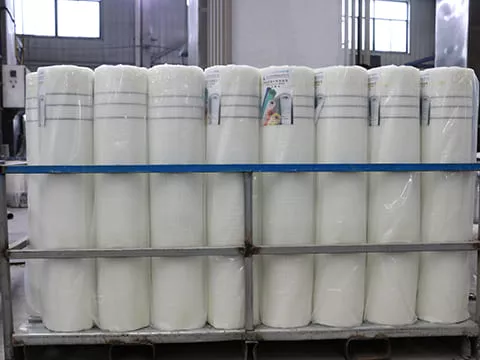
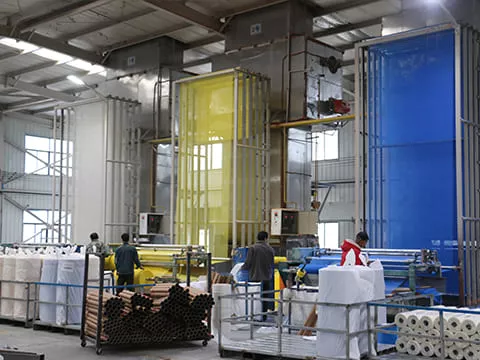
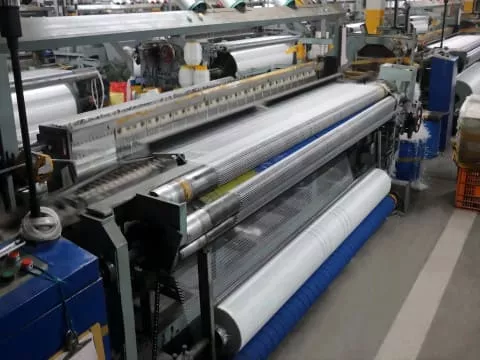
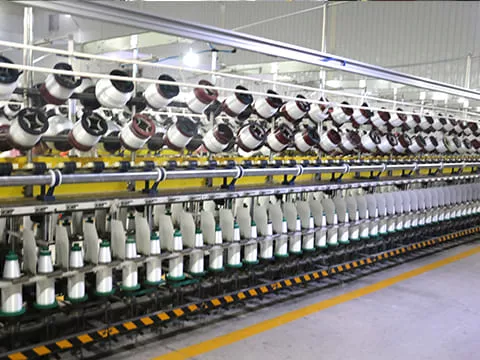
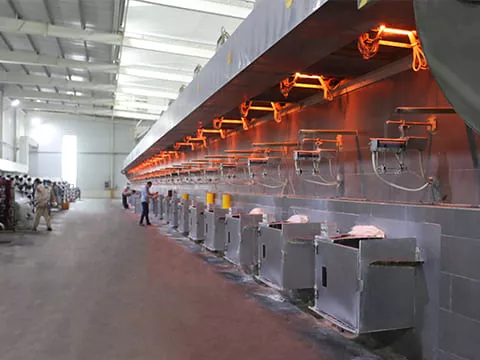
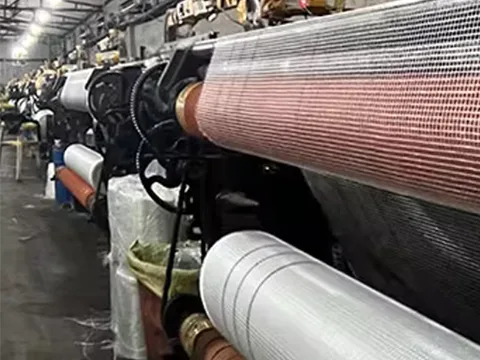
Certificate






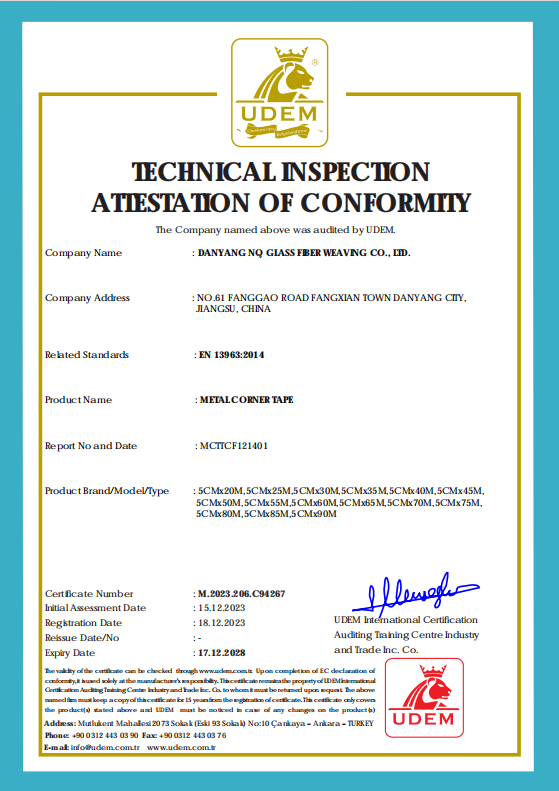

NQ Fiberglass Mesh: Unmatched Quality and Performance





“I recently purchased NQ brand fiberglass mesh products for wholesale building materials, and I find that NQ brings significant advantages to my business. Its excellent quality and wide range of applications quickly became the star product in my business—its professional technical support and after-sales service. Whether in product selection, application guidance, after-sales tracking, or problem-solving, NQ’s team can provide timely and professional help. This gives me more peace of mind in business operations and more confidence to recommend NQ products to customers.”

Alexander Smith
Entrepreneur
“As an experienced builder, I know the importance of selecting high-quality, reliable building materials for the success of a project. Recently, I purchased fiberglass mesh from NQ, whose high strength, corrosion resistance, and excellent stability make it ideal for various engineering projects. Whether in wall reinforcement, thermal insulation, or waterproof, moisture-proof, anti-crack enhancement, it provides more solutions. NQ’s fiberglass mesh has given me a significant business advantage with its outstanding performance. I look forward to continuing to deepen cooperation with NQ in the future, promoting the joint implementation of more quality projects, and providing better products and services for my customers.”

Michael Brown
Entrepreneur
“Recently, there was the pleasure of collaborating with NQ, whose fiberglass mesh swiftly emerged as a star product in my building materials wholesale sales. Their prices are reasonable, and they guarantee high quality. Excellent performance in various engineering projects favored and trusted by customers. This enhanced my ability to provide solutions to customers and further enhanced my competitiveness in the market. I look forward to continuing to deepen my collaboration with NQ.”

James Williams
Entrepreneur
Fiberglass Mesh By GSM(Gram Square Meter)
The weight of fiberglass mesh is commonly measured in grams per square meter (g/m²) in the industry. This is one of the most important parameters as it directly affects the material’s performance, influencing its application. The weight range is typically from 45g/m² to 200g/m². Common standard weights include 45g/m², 60g/m², 75g/m², 90g/m², 110g/m², 145g/m², and 160g/m², with the best-selling weights being 45g, 145g, and 160g/m² fiberglass mesh.
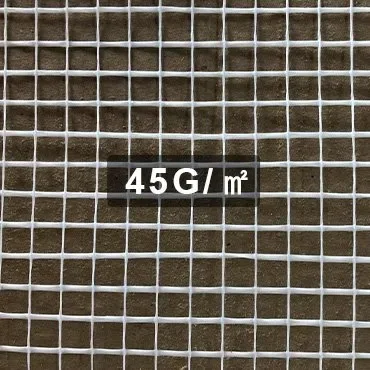
45 gsm fiberglass mesh
45 gsm fiberglass mesh is the lightest among all the weight options. In addition to its alkali resistance and heat resistance, it has specialized applications in exterior insulation and finish systems (EIFS) and roofing systems. It can also be used as a backing for marble and mosaic tiling.
The 45 gsm fiberglass mesh is particularly popular in the UAE market with mesh sizes of 2.85mm x 2.85mm and 2.5mm x 2.5mm.
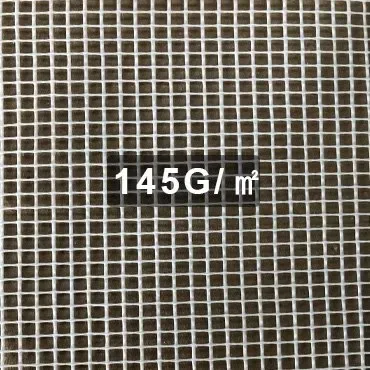
145 gsm fiberglass mesh
145 gsm fiberglass mesh is commonly used as a reinforcement material, especially effective in preventing surface cracking. Due to its high density and resistance to deformation, it is widely used in indoor and outdoor waterproofing systems. The mesh’s strength and durability make it an ideal choice.
In the Russian market, 145 gsm fiberglass mesh is in high demand with a 4mm x 4mm mesh size, and blue is the most popular color.
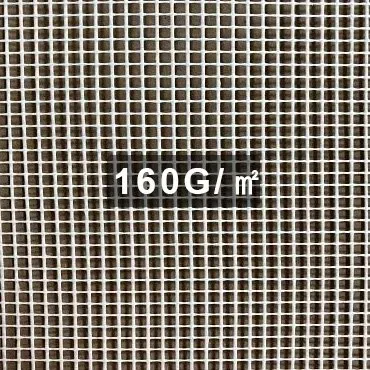
160 gsm fiberglass mesh
160 gsm fiberglass mesh is an ideal reinforcement material for enhancing the stability of exterior walls and various mortars and preventing cracking. It is also highly suitable for treating cement materials like gypsum boards and insulation boards, improving their durability and strength. Additionally, it can be used as insulation material, providing excellent protection and thermal resistance.
160 gsm fiberglass mesh is one of the most popular specifications, capable of meeting the demands of most construction and building applications.
Fiberglass Mesh By Width
Fiberglass mesh fabric typically comes in widths ranging from 100 cm to 200 cm, and you can customize the width within this range. When selecting the appropriate width, it’s essential to consider the area where the mesh will be applied. The key factors to consider are ensuring the fabric is wide enough to cover the area and minimizing waste. The good news is that if it’s not a perfect fit, you can easily cut it to the desired size.
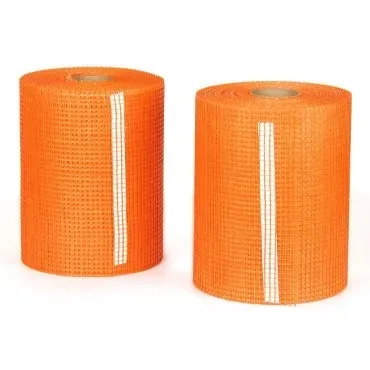
6 Inch Fiberglass Mesh
Made from high-quality E-glass fibers, it offers excellent tensile strength, alkali, and heat resistance while being lightweight and durable. It suits exterior wall waterproofing systems, tile backing, and more.
Depending on the application requirements, it is typically available in 6-inch x 6-inch or 6-inch x 12-inch grids, with weights ranging from 45 gsm to 145 gsm.
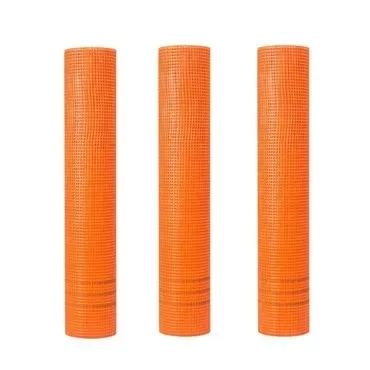
36 Inch Fiberglass Mesh
It has excellent tensile strength, water, heat, and alkali resistance. It is used for exterior wall insulation and mortar reinforcement (EIFS), humid environments (such as bathrooms and kitchens), etc., to enhance stability and prevent cracking. Standard specifications include 36 inches (about 91 cm) in width, popular lengths are 75 feet and 150 feet, and the mesh size is usually 5mm x 5mm or 6mm x 6mm.
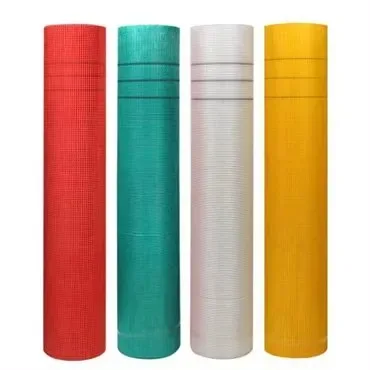
48 Inch Fiberglass Mesh
Typically 150 feet long and white, it has excellent warp and weft stretch capabilities, effectively avoids cracks, and minimizes impact from all directions. It is suitable for preventing cracking and helps build structure and strengthen the back of mosaics, stones, and marbles.
Typical applications include exterior insulation and mortar reinforcement (EIFS), waterproofing systems, tile backing, and roofing and insulation systems.
Fiberglass Mesh By Coating
The primary function of coated fiberglass mesh is to maintain its shape and enhance its chemical properties to improve the performance of specific applications. Acrylic emulsion is usually used to glue it to achieve better wall insulation and crack resistance. For example, acrylic will be an excellent choice when higher temperatures and easy cleaning are required.
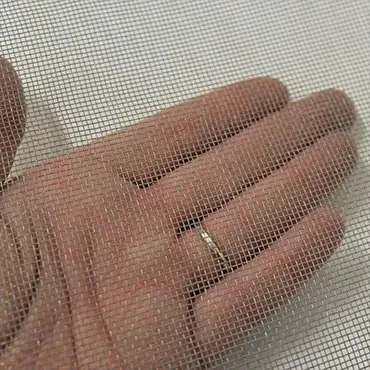
PVC Coaated fiberglass mesh
PVC fiberglass mesh is woven from fiberglass yarns and coated with a polyvinyl chloride (PVC) layer. It has the advantages of corrosion resistance, strong weather resistance, and easy cleaning. Standard specifications include a width of 36 inches (about 91 cm), a length of 75 feet and 150 feet, and the mesh size is usually 5mm x 5mm or 6mm x 6mm. It is widely used in screen windows, wall insulation, building decoration, and agriculture.
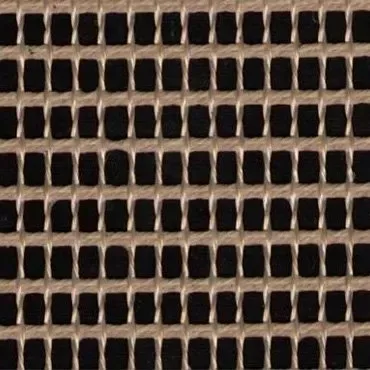
PTFE fiberglass mesh
Our unique process uses plain or twisted weave as the base material, which is then coated with polytetrafluoroethylene. It has excellent properties such as high-temperature resistance, corrosion resistance, and anti-adhesion and is widely used in various industrial fields. One of the most popular applications is a conveyor belt, which can maintain excellent performance in harsh environments such as high temperatures and chemical corrosion and is an ideal solution.

Fiberglass Mesh Coated Acrylic Emulsion
It is a high-performance fiberglass mesh with good transparency, weather, and corrosion resistance. Acrylic emulsion coating not only has excellent modification properties but also adapts well to various fabrics and has the advantage of being low cost. By melting and coating the acrylic resin on the mesh, it is more durable and suitable for multiple building applications such as exterior wall insulation, wall reinforcement, and crack prevention, ensuring long-term and stable use in harsh environments.

Self-adhesive Fiberglass mesh
Self-adhesive fiberglass mesh is a fiberglass grid with an adhesive coating, widely used for crack reinforcement, wall repairs, and tile installation. It features corrosion resistance, high temperature tolerance, and strong strength. No additional adhesive is required during use, making it easy to install and durable.
Application Of Fiberglass Mesh In Construction And Restoration Industry
As a manufacturer of Fiberglass Mesh, our products are used in a wide range of applications due to their outstanding performance and versatility. In the automotive industry, Fiberglass Mesh is an ideal material for body repair due to its high strength and corrosion resistance, and it is often used to repair dents and cracks and strengthen body structures. At the same time, it also performs well in outdoor and sports applications, such as the production of outdoor equipment, protective guardrails, and so on. Fiberglass Mesh is also widely used in filtration and protection areas such as air purification, liquid filtration, and insect protection nets. In addition, it also plays a vital role in special applications such as repairing water tools, complex model making, stone processing, and ship construction. In buildings and homes, Fiberglass Mesh is used to reinforce tiles, school bus seats, and outdoor balcony window screens, which are beautiful and practical.
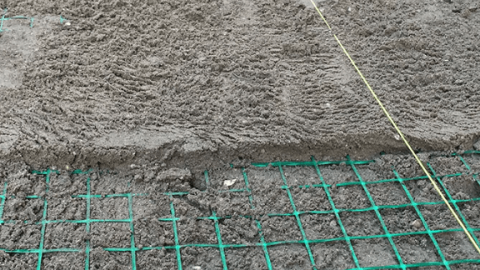
Fiberglass Mesh For Concrete
Glass fiber mesh rolls and strips are coated with acrylic resin and are excellently resistant to water, alkali, alkali, flexibility, and aging. It enhances the life and strength of concrete structures, Bridges, and DAMS.
Mesh 4x4mm, 4×4.5mm, 5x5mm, 4x5mm
160 g/m2
Select according to project requirements
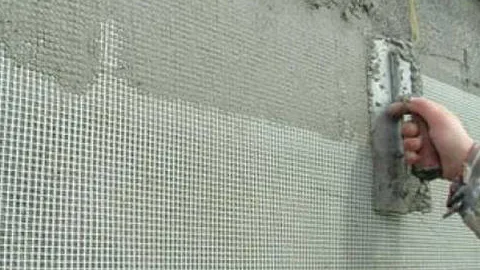
Fiberglass Mesh For Stucco
Fiberglass mesh for stucco is a tri-directional weave, flexible treated glass fiber mesh used with cement stucco brown coats in vertical wall construction. Provides excellent water resistance and flexibility.
Mesh 2.5×2.5mm to 5x5mm
Gram weight 60g/m²~ 300g/m²
Select according to project requirements

Fiberglass Mesh For Waterproofing
Waterproofing fiberglass mesh coated with a liquid film for strengthening, such as acrylic copolymer, polyurethane, or asphalt.
Mesh 2.5×2.5mm to 5x5mm
The gram weight ranges from 45g/m² to 160g/m²
Select according to project requirements

Fiberglass Mesh For Plaster Walls
Fiberglass mesh tape can be used for splicing drywall, repairing drywall cracks, making connections faster, improving adhesion andgrip, and supporting the gypsum layer.
Mesh 4x4mm to 5x5mm
G weight 75g/m² to 300g/m²
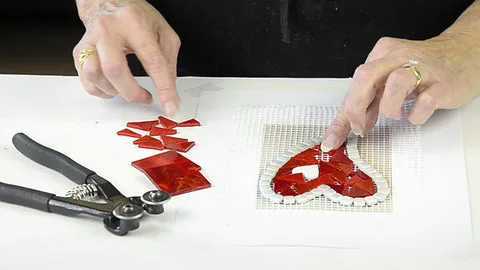
Fiberglass Mesh For Mosaic Tiles
Fibreglass mosaic mounting mesh. Suitable for all types of mosaic tiles. It is powerful and safe to use. Easy to cut with a craft knife or scissors.
Mesh 2.5×2.5mm to 5x5mm
G weight 75g/m² to 300g/m²

Fiberglass Mesh For Roof Repair
Fiberglass mesh is used for roo and is suitable for waterproofing applications. It can be embedded in roof membrane, and it is easy things and sealants to enhance its tightness
Use roofing cement to reinforce cracks, crevices, and loose joints. Used for asphalt shingles, metal roofing, etc.
Mesh 2.5×2.5mm to 5x5mm
Gram weight between 60g/m² and 300g/m²
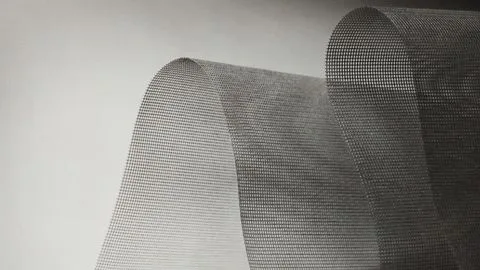
Fiberglass Window Screen Mesh
Our fiberglass mesh does not wrinkle, has no dents, and is easy to untie. We used it for new and replacement window screens and insect-proof mosquito nets. Strong and flexible, fiberglass screens are an economical and practical choice.
Mesh 18x16mm, 17x15mm, etc
The common width is 1 meter, 1.2 meters, 1.5 meters and so on
The gram weight is between 85g/m² and 160g/m²
-e1723010127838.webp)
Alkali Resistant Fiberglass Mesh Used For Stone Back
Our alkali-resistant fiberglass mesh is made of C-type or E-type glass fiber woven material, treated with alkali-resistant glue to reduce the possibility of cracking, and widely used in wall reinforcement, external wall insulation finishing systems (EIFS), marble backing, stone backing, Mosaic backing, and so on.
Mesh 5mm x 5mm or 4mm x 4mm
Each square meter weighs 80g to 165g
Width and length can be customized
-jpg-r41qhycjknrfgml91u506sy0ajr5m0n9xrn75fvij0.webp)
Cement Board Fiberglass Mesh
Made of vinyl-coated fabric, designed for use in high humidity environments on cement boards, drywall finishes, and walls to increase the strength of cement boards and reduce cracks.
Mesh 5mm x 5mm or 4mm x 4mm
The weight is between 80g/㎡ and 165g/㎡
Width is 1000mm to 2000mm, length is 50m, 100m, 200m and so on.
Frequently Asked Questions
Below, you can find some frequently asked questions about shipment and MOQ. If you have any further questions, please feel free to contact us.
What is your MOQ?
Our MOQ is usually 1x20ft container.But we accept lower quantity for your trial order. Please feel free to inform us your plan for
purchasing, we will offer the price correspond to your qty. And we hope your would increase your order qty after you check our
product quality and know our services.
What is the shipping port?
We ship the goods via Shanghai port.
How many colors are available?
We can do custom color when reach our MOQ qty.
Our regular colors are white, yellow, green, blue, orange, red etc.
What format of the file do you need if I want to do my own design?
For printing label design, we need AI or PDF file for set up the print-plate.
What is your delivery time?
The time of delivery is about 20~30days after we receive the deposit.
What is your sample time?
Usually we will take 7-10 days to make the samples.
Which Shipment way is available?
By sea to your designated port.
Which Payment way is workable?
1. Irrevocable L/C, Cash, PayPal, Credit card and T/T money transfers.
2.30% T/T deposit in advance, 70% balance before shipment after presentation of ready cargo.
3.L/C ( Irrevocable LC at sight)
If you need custom size such as gram weight and mesh size etc or private logo pls feel free inquiry us!
Fiberglass Mesh FAQ
What is fiberglass mesh?
Fiberglass mesh is a neatly woven, crisscross pattern of fiberglass thread, primarily consisting of alkali-resistant glass fibers. This versatile material is used in various construction and industrial applications, where it serves as a base for creating new products such as tape and filters. Its unique composition and woven structure make it ideal for applications requiring strength, durability, heat, moisture, and chemical resistance.
- Definition of Fiberglass Mesh
- Fiberglass mesh is a strong, durable material made from woven fiberglass fibers coated with resin. It is commonly used for reinforcing, protecting, and enhancing various surfaces and structures, especially in the construction and repair industries.
- Applications of Fiberglass Mesh
- Reinforcement: It is widely used to reinforce plaster, stucco, drywall, and concrete, preventing cracks and adding strength.
- Pest Control: Fiberglass mesh is also used for pest control, such as preventing rodents from entering buildings.
- Waterproofing: It is often used in waterproofing systems for exterior walls, providing extra durability and resistance to weather conditions.
- Properties of Fiberglass Mesh
- Durability: It is resistant to wear, tear, and environmental factors, making it a long-lasting material.
- Lightweight: Despite its strength, fiberglass mesh is lightweight and easy to handle.
- Non-corrosive: Fiberglass mesh does not rust or corrode, unlike metal mesh, making it ideal for outdoor use.
- Types of Fiberglass Mesh
- Standard Mesh: This is used for general reinforcement purposes.
- High-Strength Mesh: Designed for more demanding applications where extra durability is required.
- Waterproof Mesh: Specifically made for use in waterproofing systems.
For more information on fiberglass mesh and to purchase high-quality products, you can visit NQ Fiberglass Mesh, a trusted manufacturer based in China that offers a range of durable solutions for various applications.
What is fiberglass mesh used for?
Fiberglass mesh is used in various applications for its strength and durability. Here are some of the most common uses:
- Construction and Building Materials:
- Reinforcing plaster: It’s often used to reinforce plaster and stucco on walls to prevent cracking, especially in areas prone to movement or expansion.
- Wall reinforcement: In masonry, it adds strength to the walls, helping to prevent cracks or defects in the plaster.
- Drywall repair: It can patch holes in drywall or reinforce joints between drywall sheets.
- Waterproofing:
- Fiberglass mesh is commonly used in waterproofing systems, especially for exterior walls, as it helps create a solid barrier against water infiltration.
- Composites and Manufacturing:
- Reinforcement in composite materials: It’s frequently used in making composite materials, such as fiberglass-reinforced plastic (FRP), for automotive parts, boats, and other industrial applications.
- Insulation: Fiberglass mesh is sometimes used as part of an insulation system, either in building insulation or industrial equipment.
- Window and Door Screens:
- It’s used to make window and door screens, offering a durable, weather-resistant mesh that helps keep bugs out while allowing airflow.
- Agriculture:
- Used for plant support in agricultural applications, such as garden trellises, or in horticulture for strengthening plant structures.
Do you use fiberglass mesh in these areas, or are you exploring other applications?
Is fiberglass mesh safe?
From a professional perspective, fiberglass mesh is safe, but this conclusion is predicated on its correct usage and appropriate handling. The following is a detailed analysis of the safety of fiberglass mesh:
I. Material Safety
- Non-toxic and Harmless: Fiberglass mesh is primarily made of fiberglass and does not contain toxic or harmful substances. Therefore, it does not pose direct health risks to humans under regular use.
- Chemical Stability: Specially treated fiberglass mesh (such as being coated with alkali-resistant polymer emulsions) exhibits good chemical stability and can resist acid and alkali corrosion, further ensuring its safety during use.
II. Usage Safety
- Protective Measures: Although fiberglass mesh is non-toxic, fiber debris may be generated during processing and installation. Therefore, it is recommended that operators wear appropriate protective equipment, such as dust masks, gloves, and safety glasses, when handling fiberglass mesh to reduce skin irritation and inhalation risks.
- Proper Installation: Ensure the fiberglass mesh is tightly bonded to the substrate, avoiding hollows or wrinkles, to enhance its overall performance and reduce potential safety hazards due to improper installation.
III. Environmental Friendliness
As an environmentally friendly building material, fiberglass mesh generates relatively few waste products during production and use and is easy to recycle and reuse. This helps reduce construction waste and aligns with sustainable development principles.
IV. Precautions
- Avoid Prolonged Exposure: Although fiberglass mesh is non-toxic, prolonged direct contact or inhalation of its fibers may still have health impacts. Therefore, exposure time should be minimized during operation.
- Storage Conditions: Fiberglass mesh should be stored in a dry, well-ventilated area, away from direct sunlight and moisture, to prevent performance degradation or deterioration.
In summary, fiberglass mesh is safe under regular use and appropriate handling. However, users are advised to carefully read the product manual before use to ensure its safety and effectiveness and follow relevant safety operating procedures. Simultaneously, manufacturers should strengthen product quality control and safety performance evaluation to ensure that products meet applicable standards and regulatory requirements.
Is fiberglass mesh good?
Fiberglass mesh is advantageous due to its strength, corrosion resistance, heat resistance, excellent electrical insulation, and suitability for various applications such as concrete reinforcement, filtration, insulation, and paint reinforcement. However, it lacks the flexibility of some other meshes and is not biodegradable. Additionally, its lightweight, durable nature and ease of installation make it a popular choice for windows and doors.
Is fiberglass mesh waterproof?
Fiberglass mesh is not entirely waterproof but water-resistant and can be used in environments exposed to moisture. Fiberglass mesh is often used in concrete reinforcement, insulation, and other applications where it needs to resist moisture to some degree. However, it is not recommended for use in applications that require complete waterproofing, such as underwater structures or swimming pools. In such cases, other waterproofing materials or techniques may be needed.
Is fiberglass better than plastic?
Both materials have various uses, but there are some key differences between them. Plastic is typically cheaper and lighter, making it more attractive for certain applications. However, this lightness and low cost often come with a tradeoff in durability and strength, especially in commercial applications that require high pressure or weight resistance.
In contrast, fiberglass is more costly and heavier but offers exceptional durability, strength, and corrosion resistance. These properties make fiberglass a perfect choice for commercial applications, especially in environments that demand long-term resistance to heavy pressure and harsh conditions. Therefore, weighing the specific application requirements and environmental conditions is essential when deciding which material to use. Plastic may be a better option for applications that prioritize lightness and cost-effectiveness. However, fiberglass is likely the most suitable choice for commercial applications requiring high strength and durability.
How to use fiberglass mesh for waterproofing?
Using Fiberglass Mesh for Waterproofing: A Professional Guide
Using fiberglass mesh for waterproofing is a common practice in construction, especially for areas such as walls and roofs that require reinforcement and waterproofing. Here is a professional guide on how to use fiberglass mesh for waterproofing:
I. Preparation
- Material Preparation:
- Fiberglass Mesh: Select the appropriate specifications for the project, such as weight (e.g., 60g-300g/m²), width (e.g., 1m-2m), and mesh size (e.g., 5x5mm, 10x10mm, etc.).
- Waterproof Coating or Mortar: Choose a waterproof material compatible with the fiberglass mesh to ensure good bonding between the two.
- Other Tools: Such as brushes, rollers, scissors, mixers, etc.
- Substrate Preparation:
- Ensure the substrate is clean, smooth, and free of oil and loose materials.
- Repair cracks, holes, or other defects to ensure a solid and reliable substrate.
II. Construction Steps
- Apply the Base Layer of Waterproof Coating or Mortar:
- According to the product instructions, a waterproof coating or mortar layer should be applied to the substrate.
- Ensure uniform application and avoid missed areas or uneven thickness.
- Lay the Fiberglass Mesh:
- Before the base layer of waterproof coating or mortar dries, smoothly lay the fiberglass mesh on top.
- Ensure the mesh is tightly bonded to the substrate without wrinkles or hollows.
- Ensuring the overlap width meets the product requirements, typically 50-100mm for overlapping areas.
- Apply the Top Layer of Waterproof Coating or Mortar:
- Another layer of waterproof coating or mortar should be applied over the fiberglass mesh.
- Secure the mesh firmly to the substrate and enhance its waterproof effect through this layer of coating or mortar.
- Curing:
- Perform necessary curing work according to the product instructions, such as keeping the construction surface moist and avoiding direct sunlight.
- The curing time is generally 24-48 hours, specifically determined by the product instructions.
III. Precautions
- Select High-Quality Materials: Ensure the quality of the fiberglass mesh and waterproof coating or mortar is reliable and meets relevant standards and requirements.
- Strict Construction: Follow product instructions and construction specifications to ensure construction quality.
- Safety First: Wear protective equipment such as gloves and masks during construction to avoid injury.
By following these steps, fiberglass mesh can be effectively used for waterproofing, enhancing building structures’ waterproof performance and durability. Additionally, attention should be given to material selection and construction quality control to ensure the reliability and longevity of the waterproofing effect.
Can you use fiberglass mesh to repair bathtubs?
From a professional perspective, using fiberglass mesh to repair bathtubs is feasible, especially when dealing with larger holes. Fiberglass mesh is widely used in reinforcement and repair applications due to its high strength, resistance to acids and alkalis, and good adhesion properties. For bathtub repairs, mainly when the holes are significant, fiberglass mesh is necessary to provide additional support, ensuring that the repaired area can withstand the pressure and wear of daily use.
During the repair process, the area around the hole is typically cleaned to ensure a dry, oil-free, and impurity-free surface. Then, a layer of epoxy resin (or another suitable adhesive) is applied as a base. Subsequently, the cut fiberglass mesh is applied over the hole, ensuring complete coverage and extending slightly beyond the hole’s edge. Another layer of epoxy resin is then applied, thoroughly saturating the fiberglass mesh and allowing it to cure. This way, the fiberglass mesh effectively enhances the strength of the repaired area, preventing the hole from further expanding or reappearing.
Therefore, in response to your question, “For larger holes, a fiberglass mesh may be necessary to support the epoxy,” this statement is accurate. In bathtub repair projects, using fiberglass mesh as a support layer is a professional and practical approach for larger holes.
Please note that when performing such repairs, it is essential to follow product instructions and safety practices, use appropriate personal protective equipment, and work in a well-ventilated environment. If unsure about the procedure, it is advisable to consult professional repair services or technicians.
How to glue panels fiberglass mesh back of wood?
Gluing Fiberglass Mesh to the Back of Wood Panels: A Professional Approach
When gluing fiberglass mesh to the back of wood panels, a series of professional steps must be followed to ensure a strong and durable bond. Here is a detailed guide from a professional perspective:
I. Preparation
- Material Preparation:
- Fiberglass Mesh: Select a mesh with the appropriate size and density for the project, ensuring it is of good quality and without damage.
- Adhesive: Choose an adhesive suitable for the operating environment and requirements, such as epoxy resin, polyurethane adhesive, or construction-specific glue. These adhesives typically have strong adhesion and durability.
- Wood Panels: Ensure the wood surface is flat, clean, and free from oil, dust, or other impurities.
- Other Tools: Such as brushes, rollers, scissors, measuring tapes, etc.
- Surface Treatment:
- Clean the wood surface to remove any substances affecting the adhesive’s bonding strength.
- Light sanding may be required to increase roughness and improve adhesion if the wood surface is too smooth.
II. Gluing Steps
- Applying Adhesive:
- Use a brush or roller to apply the adhesive to the wood surface evenly. Control the amount of adhesive to ensure complete coverage without excessive waste.
- For larger panels, adopt a zone-by-zone application method to prevent adhesive drying too quickly.
- Laying Fiberglass Mesh:
- Carefully lay the prepared fiberglass mesh on the adhesive-coated wood surface. Ensure the mesh is flat without wrinkles and tightly bonded to the wood surface.
- If mesh splicing is needed, ensure enough adhesive coverage at the splice and try to make the splice line inconspicuous.
- Pressing and Fixing:
- Use appropriate tools (such as a rubber roller) to gently roll over the mesh surface to eliminate bubbles and ensure uniform adhesive distribution.
- If necessary, apply appropriate pressure to the mesh or use clamps, tape, or other fixing devices to keep the mesh in place until the adhesive dries.
III. Post-Processing
- Drying Time:
- Allow sufficient drying time according to the adhesive’s instructions. During this period, avoid disturbing or loading the glued mesh.
- Inspection and Trimming:
- After the adhesive is completely dry, inspect the mesh’s bonding. Use sandpaper or other tools to trim the edges for a neat appearance if necessary.
- Protection and Maintenance:
- Depending on the operating environment and requirements, the necessary protection and maintenance for the glued mesh must be provided. For example, waterproofing and sun protection measures should be considered in outdoor environments.
IV. Precautions
- Wear appropriate protective equipment during operation, such as gloves, masks, and safety glasses.
- Ensure good ventilation in the workplace to avoid long-term inhalation of harmful gases emitted by the adhesive.
- Follow the usage instructions and safety warnings the adhesive and fiberglass mesh manufacturers provide.
Following these steps, you can securely glue fiberglass mesh to the back of wood panels, enhancing the structure’s strength and durability.
Will fiberglass mesh adhere to plastic?
Fiberglass mesh can adhere to plastic surfaces, but various factors influence the adhesion effect.
Factors Affecting Adhesion
- Type of Plastic: Different types of plastics have different surface characteristics, which can affect the adhesion between fiberglass mesh and plastic. Some plastic surfaces may be relatively smooth and difficult to adhere to, while others may have better adhesion properties.
- Surface Pretreatment: Proper pretreatment of the plastic surface before adhering to the fiberglass mesh is crucial for improving the adhesion effect. Pretreatment may include cleaning, sanding, using a primer, or applying an adhesive promoter to increase the roughness and adhesion of the plastic surface.
- Choice of Adhesive: Selecting the appropriate adhesive is also essential for ensuring adhesion. The adhesive’s type, performance, and application method can all impact the adhesion effect. For example, some specialized adhesives may provide stronger adhesion and better weather resistance.
Application Scenarios and Considerations
The adhesion of fiberglass mesh to plastic is applied in various fields such as construction, automotive, packaging, and more. In the construction industry, fiberglass mesh is commonly used to enhance the strength and stability of plastic composite materials. However, the following considerations should be kept in mind during practical applications:
- Ensure the plastic surface is clean, oil-free, and without impurities to improve adhesion.
- Choose appropriate pretreatment methods based on the type of plastic and adhesion requirements.
- Use high-quality adhesives and follow the manufacturer’s instructions for proper application.
- Maintain appropriate temperature and humidity conditions during the adhesion process to ensure the adhesive can function effectively.
In summary, fiberglass mesh can adhere to plastic surfaces, but multiple factors influence the adhesion effect. In practical applications, suitable pretreatment methods, adhesives, and adhesion conditions must be selected based on specific situations to ensure that the adhesion effect meets the required standards.
What's the difference paper and fiberglass mesh drywall tape?
Paper Drywall Tape and Fiberglass Mesh Drywall Tape exhibit distinct differences in material composition, performance characteristics, applications, and unique features.
Material Composition
- Paper Drywall Tape: Primarily made of high-quality kraft paper, which offers good flexibility and moderate strength.
- Fiberglass Mesh Drywall Tape: Constructed from woven fiberglass and coated with alkali-resistant adhesive. Fiberglass provides exceptional strength and stability, while the alkali-resistant adhesive enhances its durability and resistance to alkaline environments.
Performance Characteristics
Performance CharacteristicsPaper Drywall TapeFiberglass Mesh Drywall Tape
Strength Moderate, suitable for general wall repairs High, particularly ideal for reinforcing wall cracks and joints requiring additional strength
Water Resistance Average may weaken when exposed to water Excellent, highly resistant to water and moisture
Alkali Resistance Average Excellent, suitable for use in alkaline environments
Durability Moderate, suitable for short-term repairs Long-lasting, ideal for long-term use and maintenance
Workability Flexible and easy to handle, but humidity control is necessary Convenient to install, resistant to damage, and relatively simple to manipulate
Applications
- Paper Drywall Tape: Mainly used for general wall crack repairs and joint treatments, especially when high-strength reinforcement is not required. Its flexibility and strength are adequate for these basic needs.
- Fiberglass Mesh Drywall Tape: Widely used for reinforcing wall cracks, joints, and corners that require high strength. It is particularly suitable for structures such as concrete, gypsum boards, EIFS systems, wooden floors, and rubber flooring in sports facilities.
Additional Features
- Paper Drywall Tape is relatively low-cost and easy to obtain and replace, but it may not be suitable for all types of wall repairs.
- Fiberglass Mesh Drywall Tape: In addition to its high strength and durability, it exhibits good crack and corrosion resistance. It can maintain stable performance in harsh environments and is an indispensable high-performance material in the construction industry.
In summary, Paper Drywall Tape and Fiberglass Mesh Drywall Tape differ significantly in material composition, performance characteristics, applications, and unique features. The choice between these two types of drywall tape depends on specific construction requirements and budgetary considerations. Fiberglass Mesh Drywall Tape is the better choice for high-strength reinforcement and durability, while Paper Drywall Tape is sufficient for general repairs and joint treatments.
Where to buy fiberglass mesh?
If you’re looking to buy fiberglass mesh, here are some options:
- NQ Fiberglass Mesh (NQ Official Website)
- Visit the official website of NQ Fiberglass Mesh to learn more about the products and make a purchase. NQ is a fiberglass mesh manufacturer based in China, offering high-quality products and customization services for various applications, such as crack prevention and waterproofing.
- Amazon
- By searching for “fiberglass mesh” on Amazon, you can find various fiberglass mesh products in different sizes and types suitable for home DIY or small repair projects.
- eBay
- eBay offers fiberglass mesh products in various sizes and types, some sold directly by wholesalers or manufacturers.
- Alibaba
- As a leading B2B platform, Alibaba is ideal for bulk purchasing fiberglass mesh. You can directly contact Chinese manufacturers and suppliers to choose the right product and specifications.
- Specialty Building Material Stores
- Well-known building material stores like Home Depot, Lowe’s, and B&Q offer fiberglass mesh options for local project needs.
- These platforms and suppliers offer different purchasing options, whether you’re buying in small quantities or bulk. NQ’s official website is also a reliable source for purchasing high-quality fiberglass mesh.
Can rats chew through fiberglass mesh
- Rats’ Gnawing Ability
- Rats are notorious for their strong, sharp teeth. They gnaw on various materials to gain access to shelter and food and to keep their growing incisors in check. Rats can chew through wood, plastic, soft vinyl, rubber, and even low-gauge aluminum or fiberglass-based screening. Their teeth are capable of causing significant damage to homes and buildings.
- Fiberglass Mesh Durability
- Fiberglass mesh is designed to be strong and resistant to damage from pests. It is commonly used for pest control, including preventing rodents from entering buildings. However, while fiberglass mesh is more durable than many other materials, rats can still chew through it under certain circumstances. The mesh quality and the fibers’ thickness play a significant role in its effectiveness against rats.
- Factors Affecting Resistance
- The resistance of fiberglass mesh to rats depends on several factors:
- Quality of the mesh: High-quality, thicker fiberglass mesh is more likely to withstand gnawing.
- Installation: Proper installation is key. If the mesh is not tightly secured, rats may find weak spots to chew through.
- Rat persistence: Rats are persistent creatures, and if food or shelter is accessible, they may continue to attempt to chew through barriers.
- Long-Term Protection Recommendations
- While fiberglass mesh offers adequate protection against many pests, it may not be 100% rat-proof if the rats are remarkably persistent. To enhance security, it’s essential to:
- Use high-quality fiberglass mesh.
- Ensure the mesh is installed correctly and secured.
- Combine the mesh with other pest control methods, such as sealing gaps, using repellents, and removing food sources.
- Consider checking out NQ Fiberglass Mesh for high-quality fiberglass mesh products that can help prevent rodent intrusion. NQ provides durable and reliable solutions to meet various pest control needs.
When to use fiberglass mesh tape for drywall?
Fiberglass mesh tape is a self-adhesive, open-weave tape made of fiberglass strands, commonly used in drywall installation and repair. It offers several advantages in specific scenarios:
✅ When to Use Fiberglass Mesh Tape
Quick Repairs and Patching
Ideal for small holes or cracks, such as those caused by door handles or minor impacts.
Its self-adhesive nature allows for fast application without the need for a base coat of joint compound.
Particularly useful for DIY projects due to its ease of use.
High-Moisture Areas
Fiberglass mesh tape is mold-resistant, making it suitable for bathrooms, kitchens, and other damp environments.
It provides better moisture resistance compared to paper tape.
Wider Gaps and Uneven Seams
Effective for joints with wider gaps or where drywall panels don’t align perfectly.
The mesh structure bridges these gaps more effectively than paper tape.
Time-Sensitive Projects
Since it’s self-adhesive, it eliminates the need for an initial layer of compound to embed the tape.
This can speed up the taping process, especially in large projects.
⚠️ Considerations and Limitations
Use with Setting-Type Compound
Fiberglass mesh tape should be used with setting-type joint compound rather than pre-mixed compounds.
This combination provides a stronger bond and reduces the risk of cracking.
Not Ideal for Inside Corners
Due to its lack of a crease, fiberglass mesh tape is more challenging to fold and fit into inside corners.
Paper tape, which has a pre-creased center, is generally preferred for these areas.
Potential for Cracking
While fiberglass mesh tape has high tensile strength, it’s more elastic than paper tape, which can lead to joint movement and potential cracking over time if not properly applied.
In summary, fiberglass mesh tape is best utilized for quick repairs, areas prone to moisture, and joints with wider gaps. However, it’s essential to pair it with the appropriate joint compound and be mindful of its limitations in specific applications like inside corners.
If you need further assistance with drywall projects or selecting the right materials, feel free to ask!
Fiberglass in concrete vs wire mesh?
Strength and Durability:
Fiberglass concrete offers higher tensile strength and excellent durability, resisting impacts from high winds, shocks, earthquakes, and chemical corrosion. Wire mesh concrete has high strength but is susceptible to chemical corrosion, especially in damp or corrosive environments. However, it still provides stable structural support, reducing the risk of cracking and deformation in concrete.
Cost and Processing:
Fiberglass concrete costs may be relatively higher due to using unique materials and processes. Special processing and installation techniques may also be required to ensure optimal performance. Wire mesh concrete: The cost will likely be lower than fiberglass concrete. In terms of processing and installation, wire mesh concrete is generally easier to handle and does not require special skills or equipment.
Fiberglass mesh and resin?
Definitions:
Fiberglass mesh is a grid cloth based on medium-alkali or alkali-resistant glass fiber yarn coated with an alkali-resistant adhesive. It has high strength, corrosion resistance, and heat resistance.
Resin is an organic polymer compound with strong adhesion and heat resistance. It can be natural or synthetic and is widely used in the manufacture of plastics, paints, adhesives, inks, etc.
Combined Use: Fiberglass mesh and resin are often used together, especially in manufacturing composite or reinforcing materials. The resin is an adhesive that tightly bonds the fiberglass mesh to form a composite material with excellent properties such as high strength, high modulus, corrosion resistance, and heat resistance. This composite material finds applications in various industries, including construction, aerospace, automotive, and electronics. For example, in the construction industry, it can reinforce concrete structures, improving the seismic performance and durability of buildings. In the aerospace industry, it can manufacture components for aircraft, rockets, and other equipment, enhancing strength and heat resistance.
Drywall paper tape vs fiberglass mesh?
Materials: Dry wallpaper tape: Paper coated with adhesive.Fiberglass mesh: made of fiberglass and coated with adhesive.
Purpose: Dry wallpaper tape: suitable for repairing small cracks and smoothing surfaces.Fiberglass mesh: Used to reinforce large cracks and high-stress areas.
Durability: Dry wallpaper tape: the cost is lower, but the durability is relatively weak.
Fiberglass mesh: Slightly more expensive but more durable.
What is Fibreglass mesh made of?
- Composition of Fiberglass Mesh
- Fiberglass mesh is primarily made of glass yarn woven into a fabric. The yarn is then impregnated with an adsorbent and hardening coating, which enhances the mesh’s structural integrity and other beneficial properties. This coating also contributes to the material’s durability and resistance.
- Types of Glass Used
- Woven glass fiber mesh is typically made from two different types of glass:
- E-glass: This type of glass is designed to withstand temperatures up to 600°C and is commonly used in general applications due to its strength and durability.
- SiO2-glass: A more advanced type of glass that can withstand much higher temperatures of 1000+°C, making it ideal for applications requiring superior heat resistance.
- Manufacturing Process
- The manufacturing process involves weaving the glass yarn into mesh fabric using a loom. Afterward, the fabric is impregnated with a special coating that hardens and strengthens the mesh. This coating is essential for increasing the mesh’s resistance to environmental factors such as moisture, UV rays, and mechanical stress.
- Properties of Fiberglass Mesh
- High Strength: The glass fibers provide excellent strength and resistance to breaking or stretching.
- Heat Resistance: Depending on the type of glass used, fiberglass mesh can withstand a wide range of temperatures, making it ideal for use in construction, insulation, and other high-heat environments.
- Durability: It is resistant to moisture, corrosion, and UV degradation, which makes it suitable for both indoor and outdoor applications.
For more detailed information on fiberglass mesh and to explore high-quality products, visit NQ Fiberglass Mesh, a trusted manufacturer based in China.
Is fiberglass mesh heat resistant
Yes, fiberglass mesh is indeed heat resistant. The following is a detailed professional explanation of the heat resistance of fiberglass mesh:
I. Material Properties
Fiberglass mesh is woven from fiberglass yarn, often specially treated, such as coated with alkali-resistant polymer emulsions, to enhance its alkali resistance and other properties. Fiberglass itself has a high melting point, thus exhibiting good high-temperature resistance.
II. Performance in Heat Resistance
- High-Temperature Stability: Fiberglass mesh maintains structural stability in high-temperature environments and is resistant to deformation or melting. This makes it significantly advantageous in construction or industrial applications that require high-temperature resistance.
- Temperature Range: Depending on the type of fiberglass and processing technology, the temperature range that fiberglass mesh can withstand may vary. However, generally, it can withstand higher temperatures, far above the conventional temperatures encountered in most construction and industrial applications.
- Application Examples: Fiberglass mesh is commonly used as insulation, fireproofing, or reinforcing material in high-temperature furnace chambers, flue gas ducts, pipelines, and other situations requiring high-temperature resistance. Its wide application in external wall insulation and waterproofing layer reinforcement indirectly demonstrates its good heat resistance.
III. Precautions
Although fiberglass mesh exhibits good heat resistance, the following precautions should be considered during use:
- Avoid Direct Contact with Flames: While fiberglass mesh has a high melting point, prolonged direct contact with flames may still cause damage.
- Consider the Usage Environment: When used in high-temperature, high-humidity, or corrosive environments, specially treated fiberglass mesh should be selected to ensure its performance is not affected.
- Proper Installation: During installation, ensure that the fiberglass mesh is tightly bonded to the substrate, avoiding hollows or wrinkles, to leverage its heat resistance properties fully.
In summary, fiberglass mesh possesses good heat resistance and can maintain stable performance in high-temperature environments. However, factors such as the usage environment and installation methods still need to be considered in practical applications.
Is fiberglass or polyester screen mesh better?
From a professional perspective, the statement “Polyester screen mesh is more durable than fiberglass mesh” cannot be generalized. The durability of both materials depends on various factors such as specific application scenarios, material quality, and usage environments.
Characteristics of Polyester Screen Mesh:
- Durability: Polyester fibers are robust and wear-resistant, making polyester screen mesh highly durable in some applications.
- Wrinkle Resistance: Polyester fibers are less prone to wrinkling and have strong shape retention capabilities.
- Chemical Stability: Polyester fibers are resistant to various chemicals and are not easily damaged by acids or alkalis.
- Easy Maintenance: Polyester screen mesh is generally easy to clean and maintain.
Characteristics of Fiberglass Mesh:
- High Strength: Fiberglass mesh is high-strength fiberglass, providing excellent tensile strength.
- Corrosion Resistance: Fiberglass has high resistance to chemicals such as acids and alkalis and is not prone to rusting.
- Heat Resistance: Fiberglass can maintain stability in high-temperature environments and is not easily deformed or melted.
- Versatility: Fiberglass mesh is widely used in construction, industrial, filtration, and other fields, demonstrating its versatile durability.
Comparative Analysis:
- In certain specific environments, such as those requiring high corrosion resistance, heat resistance, or tensile strength, fiberglass mesh may exhibit higher durability than polyester screen mesh.
- In other situations, polyester screen mesh may be more suitable if lighter weight, easy maintenance, and lower cost are desired.
Conclusion:
Therefore, it cannot be stated that polyester screen mesh is necessarily more durable than fiberglass mesh. The durability of both materials depends on specific application requirements and scenarios. When choosing between them, comprehensive consideration and evaluation based on actual needs should be conducted.
Please note that the above analysis is based on general material properties. Factors such as production processes and quality control must also be considered when determining the durability of specific products. In practical applications, it is recommended that you refer to the technical specifications and performance test reports of specific products.
How to tape drywall with fiberglass mesh?
From a professional perspective, using fiberglass mesh to tape drywall involves several key steps. It’s important to note that fiberglass mesh is often used with drywall tape or joint compound to reinforce joints and corners for added strength and durability.
Preparation
- Tools and Materials:
- Fiberglass mesh
- Drywall tape (optional, but fiberglass mesh is commonly used as a reinforcing material)
- Joint compound (drywall mud)
- Drywall knives (various sizes to accommodate different widths and depths of joints)
- Sandpaper
- Cleaner (for cleaning the wall surface)
- Gloves and safety glasses (for personal protection)
- Clean the Wall Surface: Ensure the drywall surface is clean, dust-free, and grease-free to allow the joint compound to adhere correctly.
Procedure
- Fill the Joints:
- Apply joint compound to fill the drywall joints, ensuring a slight raise above the surface to embed the fiberglass mesh.
- Embed the Fiberglass Mesh:
- Press the fiberglass mesh onto the wet joint compound, ensuring it covers the joint completely.
- Use a drywall knife to press the fiberglass mesh into the joint compound lightly, squeezing out any excess compound.
- Ensure the fiberglass mesh is flat and without wrinkles to prevent future cracks.
- First Coat Application:
- Apply another layer of joint compound over the fiberglass mesh, creating a uniform coat. This coat should be slightly wider than the mesh to ensure complete coverage and reinforcement of the joint.
- Allow the joint compound to dry according to the product instructions and environmental conditions.
- Sanding (optional but recommended):
- Lightly sand the first coat using sandpaper to remove any unevenness or excess joint compound.
- Clean the dust generated during sanding to prepare for the next coat.
- Second and Subsequent Coats (as needed):
- Repeat the above steps to apply two or more coats of joint compound, reinforcing the joint’s strength and smoothness.
- Allow each coat to dry completely before applying the next.
- Final Inspection and Cleanup:
- After all coats have dried, thoroughly inspect the joints for any cracks or unevenness.
- Make final repairs and sanding if necessary.
- Clean the work area, removing all tools and materials.
Precautions
- Wear gloves and safety glasses during the process to protect yourself.
- Choose fiberglass mesh and joint compound types suitable for your project’s requirements.
- Follow product instructions for best results.
- Ensure proper ventilation in the work area to minimize the accumulation of harmful gases.
Following these steps, you can effectively use fiberglass mesh to tape drywall joints, enhancing their strength and durability.
How to use fiberglass mesh for mosaic?
From a professional perspective, using fiberglass mesh in mosaic projects is primarily aimed at enhancing the strength and stability of the substrate while also providing additional crack resistance and durability. Here is a detailed explanation of the steps and considerations for using fiberglass mesh in mosaic projects:
I. Preparation
- Material Selection:
- Fiberglass Mesh: Based on the specific requirements of the mosaic project, choose a mesh with an appropriate size (e.g., 2.5×2.5mm, 3x3mm, 4x4mm, 5x5mm) and density (ranging from 60g/m² to 300g/m²).
- Mosaic Tiles: Ensure that the mosaic tiles are of good quality, with colors and patterns meeting the design requirements.
- Adhesive: Select an adhesive suitable for both the mosaic tiles and the substrate, such as cement-based or specialized mosaic adhesive.
- Grout: Used to fill the gaps between mosaic tiles, ensuring overall aesthetics and durability.
- Substrate Preparation:
- Clean the surface of the substrate to remove dust, oil, and other impurities.
- If the surface is uneven, leveling is performed to achieve a flat surface.
- Ensure the substrate is dry and has no residual moisture.
II. Laying Fiberglass Mesh
- Applying Adhesive:
- Apply a layer of adhesive to the substrate’s surface. Control the amount of adhesive to ensure full coverage without excessive waste.
- Laying the Mesh:
- Carefully lay the fiberglass mesh onto the substrate’s adhesive-coated surface. Ensure the mesh is flat without wrinkles and tightly bonded to the substrate.
- If mesh splicing is needed, ensure enough adhesive coverage at the splice and try to make the splice line inconspicuous.
- Pressing and Fixing:
- Use a rubber roller to gently roll over the mesh surface to eliminate bubbles and ensure uniform adhesive distribution.
- Apply appropriate pressure to the mesh or use clamps, tape, or other fixing devices to keep the mesh in place until the adhesive dries.
III. Laying Mosaic Tiles
- Applying Mosaic Adhesive:
- Apply another adhesive layer suitable for mosaic tiles onto the fiberglass mesh surface.
- Laying Mosaic Tiles:
- Lay the mosaic tiles onto the adhesive according to the design pattern. Ensure uniform gaps between the tiles.
- Use specialized tools to gently tap the mosaic tiles, ensuring they are tightly bonded to the adhesive.
IV. Grouting and Cleaning
- Grouting:
- After the mosaic tiles are completely dry, use grout to fill the gaps between the tiles. Ensure the grout fills the gaps and remove any excess grout.
- Cleaning:
- Use a wet cloth or sponge to clean the surface of the mosaic tiles, removing any excess grout and adhesive residue.
- Allow the grout to dry completely, then inspect and clean the surface again to ensure overall aesthetics.
V. Considerations
- Safe Operation:
- Wear appropriate protective equipment during operation, such as gloves, masks, and safety glasses.
- Ensure good ventilation in the workplace to avoid long-term inhalation of harmful gases emitted by the adhesive or grout.
- Quality Control:
- Regularly inspect the quality of the mesh and mosaic tile laying to ensure no hollow spots or warping.
- Strictly follow product instructions and construction specifications to ensure the quality of the work meets standards.
- Maintenance:
- Perform necessary maintenance and care based on the usage environment and requirements of the mosaic project. This may include regular cleaning of the surface and checking for loose grout.
By following these steps and considerations, the effective use of fiberglass mesh in mosaic projects can be ensured, enhancing the structure’s overall strength and durability.
Will fiberglass screen mesh work with fiberglass resin?
Yes, fiberglass screen mesh can work with fiberglass resin. Fiberglass and fiberglass resin are often combined in composite materials to provide excellent properties such as high strength, corrosion resistance, and heat resistance.
Characteristics of Fiberglass Screen Mesh
Fiberglass screen mesh is woven from fiberglass yarn and may have a protective coating on the surface to enhance its durability and aesthetics. This material has several advantages, including:
- High Strength and Modulus: Fiberglass single fibers have high tensile strength and a large modulus, making the fiberglass screen mesh able to withstand significant external forces without easily breaking.
- Corrosion and Heat Resistance: Fiberglass is highly resistant to corrosion and heat, allowing it to maintain stable performance in various harsh environments.
- Flexibility: Fiberglass screen mesh is relatively flexible and not easily deformed or damaged, making it convenient for installation and use.
Role of Fiberglass Resin
As the matrix material in composite materials, fiberglass resin primarily bonds and fixes the fiberglass. When fiberglass screen mesh is combined with fiberglass resin, the resin can penetrate between the fibers, forming a strong bonding layer that enhances the strength and stability of the entire composite material.
Advantages of Combined Use
Combining fiberglass screen mesh with fiberglass resin can fully leverage the advantages of both materials, resulting in composite materials with excellent performance. These composite materials have various applications in various fields, such as construction, automotive, marine, aerospace, and more.
Application Examples
In the construction field, the combination of fiberglass screen mesh and fiberglass resin can create materials that reinforce structures such as walls, floors, and roofs. These composite materials have high strength and durability and effectively resist the erosion of harsh environments on buildings.
In summary, fiberglass screen mesh can work with fiberglass resin, and their combined use can form composite materials with exceptional performance.
Can you use any fiberglass mesh for concrete countertops?
From a professional perspective, not all types of fiberglass mesh are suitable for constructing or repairing concrete countertops (such as those found in kitchens or bathrooms). When selecting fiberglass mesh for concrete countertops, several factors must be considered, including its strength, corrosion resistance, adhesion to concrete, and suitability for the countertop’s operating environment.
Here are some key points to consider when choosing fiberglass mesh:
- Strength: The tensile strength of fiberglass mesh is a crucial performance indicator as a reinforcing material. For concrete countertops that need to bear certain loads, fiberglass mesh with sufficient tensile strength should be selected to ensure the countertop’s overall strength and durability.
- Corrosion Resistance: Concrete may contain alkaline substances that can corrode some types of fiberglass mesh. Therefore, its alkali resistance should be considered when choosing fiberglass mesh to ensure long-term use in a concrete environment without damage.
- Adhesion to Concrete: Good adhesion between fiberglass mesh and concrete is essential to ensure the reinforcing effect. Therefore, when selecting fiberglass mesh, attention should be given to its surface treatment (whether it is coated with resin) and its compatibility with the concrete mix.
- Mesh Size and Fiber Diameter: The mesh size and fiber diameter affect the distribution and reinforcing effect of fiberglass mesh in concrete. Generally, the mesh size should not be too large or too small and should be selected based on specific needs and design requirements. Simultaneously, the fiber diameter should be appropriate to ensure an effective reinforcing network formation in the concrete.
- Operating Environment: The operating environment of the concrete countertop is also a factor to consider when selecting fiberglass mesh. For example, fiberglass mesh with corresponding resistance should be chosen if the countertop can withstand high temperatures, humidity, or chemical corrosion.
In summary, to ensure the quality and durability of concrete countertops, fiberglass mesh should be carefully selected based on specific needs and design requirements. Additionally, proper installation and curing methods should be followed during construction to ensure that the fiberglass mesh fully exerts its reinforcing effect.
Please note that the above information is for reference only. For more specific and professional advice in practical applications, it is recommended to consult professional building material suppliers or engineers.
Can mice chew through fiberglass mesh
- Durability of Fiberglass Mesh
- Fiberglass mesh is typically very durable and is designed to resist damage from pests like mice. It is strong and provides adequate protection against most small pests.
- Mice’s Gnawing Ability
- However, mice have powerful teeth. They gnaw on various materials to gain shelter access and keep their growing incisors in check. Mice can chew through wood, plastic, soft vinyl, rubber, and even low-gauge aluminum or fiberglass-based screening.
- Protection Offered by Fiberglass Mesh
- While fiberglass mesh is an effective barrier against most pests, it is not impervious to chewing. If the mesh is not installed correctly or the mice are remarkably persistent, they may attempt to chew through it.
- Protection Recommendations
- To ensure long-lasting protection, it’s recommended to use high-quality fiberglass mesh and ensure it is securely installed. Additionally, it will be more effective when combined with other pest control methods (such as sealing gaps and eliminating food sources).
For high-quality fiberglass mesh products, visit NQ Fiberglass Mesh. We offer strong and durable solutions to help protect your property.
How to cut fiberglass mesh
- Tools You Need
- Use shears or an X-ACTO knife to cut fiberglass mesh. These tools are ideal because they allow a precise, clean cut without fraying the material.
- Heavy-duty shears or precision blades such as an X-ACTO knife are best suited for cutting fiberglass mesh, as they are designed to handle tough, durable fibers.
- Cutting Process
- Lay the fiberglass mesh flat on a smooth surface.
- Measure and mark where you need to cut.
- Using heavy-duty shears or an X-ACTO knife, cut along the marked line. Ensure you cut slowly and steadily to maintain a straight line through the fabric.
- Ensure the scissors or knife are sharp enough to effortlessly slice through the mesh without pulling or tearing the fibers.
- Safety Tips
- Always wear gloves to protect your hands from the sharp edges of the mesh.
- Use protective eyewear to avoid irritation from fiberglass dust or shards.
- Cut in a well-ventilated area to minimize exposure to fiberglass particles.
- Additional Tips
- If you’re cutting a more extensive section of fiberglass mesh, consider using a utility knife with a long, straight edge to make longer cuts more manageable.
- Avoid bending the mesh while cutting, as it can distort the fibers and make the cut less clean.
For reliable, durable fiberglass mesh products, you can visit NQ Fiberglass Mesh, which offers high-quality solutions for various applications.
- Tools You Need
Contact
- Phone: +86-13775339109
- Whatsapp: 0086-13775339109
- mail: fiberglassmesh@hotmail.com
- Address: Fangxian Town, Danyang, Jiangsu, China, 212333






